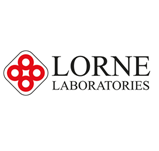Focus on Salmonella
9 October 2015
Photo credit: mripp via Visual Hunt / CC BY
Salmonellosis is one of the most prevalent and widespread human foodborne illnesses, with tens of millions of cases each year, worldwide. Often referred to simply as 'Salmonella', this gastrointestinal infection is caused by Salmonella bacteria, emanating from the Enterobacteriaceae family.
There are many different varieties of Salmonella, with S. Enteritidis and S. Typhimurium, the most common strains in the UK.
According to research by the Food Standards Agency, Salmonella causes approximately 2,500 annual hospital admissions in the UK each year alone, the highest of any pathogen. The infection can be serious, particularly for the young, elderly and for those with impaired immune systems.
Causes
Animals that are used for food can be infected with Salmonella from a variety of sources including their feed and environment. This means that many foods of animal origin can easily become contaminated.
Beef, poultry, milk, and eggs are a common source of salmonella infections, however it is also possible for fruit and vegetables to be contaminated via environmental sources.
The pathogen has been identified in vegetables such as tomatoes; salad leaves and peppers, as well as seeds, nuts and fruit juice. A contributory risk factor is that contaminated foods will normally smell and look normal.
Salmonella can also be contracted from contact with infected animals, many of which are commonly kept as pets. These include small rodents such as hamsters, baby chicks and ducklings, as well as some reptiles.
Salmonella can be found in animal faeces, thus the risk is made more severe when symptoms of diarrhoea have been observed in the animal. Health guidelines advise washing your hands immediately after handling any of these animals, even when the animal appears to be in good health.
Salmonella is particularly prevalent in the summer months, when temperatures are warmer. Care should be taken when storing and preparing food to reduce the risk factors associated with the infection.
Symptoms
People infected with salmonella often develop a fever, diarrhoea and stomach cramps. The onset of symptoms is normally seen in sufferers between 12 and 72 hours following infection.
Dehydration is common amongst suffers, particularly those who experience acute and prolonged diarrhoea. The infection can be particularly severe in young children and the older population, as well as those with inhibited immune systems.
Acute Salmonella can sometimes result in death; research from the University of Liverpool suggests there are 80 deaths on average in the UK each year. The severity of the disease is dependent on a variety of factors, including the particular strain.
A small number of those infected with Salmonella may also develop Reiter's syndrome, a reactive type of arthritis causing severe pain in the joints.
Treatment
Most suffers of salmonella will recover without treatment in approximately 4 to 7 days. However, in acute cases, suffers can experience severe dehydration and may require hospital treatment so that fluids can be administered intravenously.
Those who only experience symptoms of diarrhoea will usually make a complete recovery, although it may take some time before the bowels return to normal functioning.
Detection
Lorne Laboratories use febrile antigens for the detection of certain Salmonellae, Richettsiae and Bruchellae pathogens. These antigens are suspensions of killed bacteria, which are stained to facilitate the reading of agglutination tests.
When mixed with patient samples that contain specific IgG or IgM antibodies against Salmonellae, Richettsiae or Bruchellae pathogens, the bacterial suspension will agglutinate.
For more information on Febrile Antigen Kits and the detection of Salmonellae and other pathogens, visit our product page or contact us for more information.

Share





